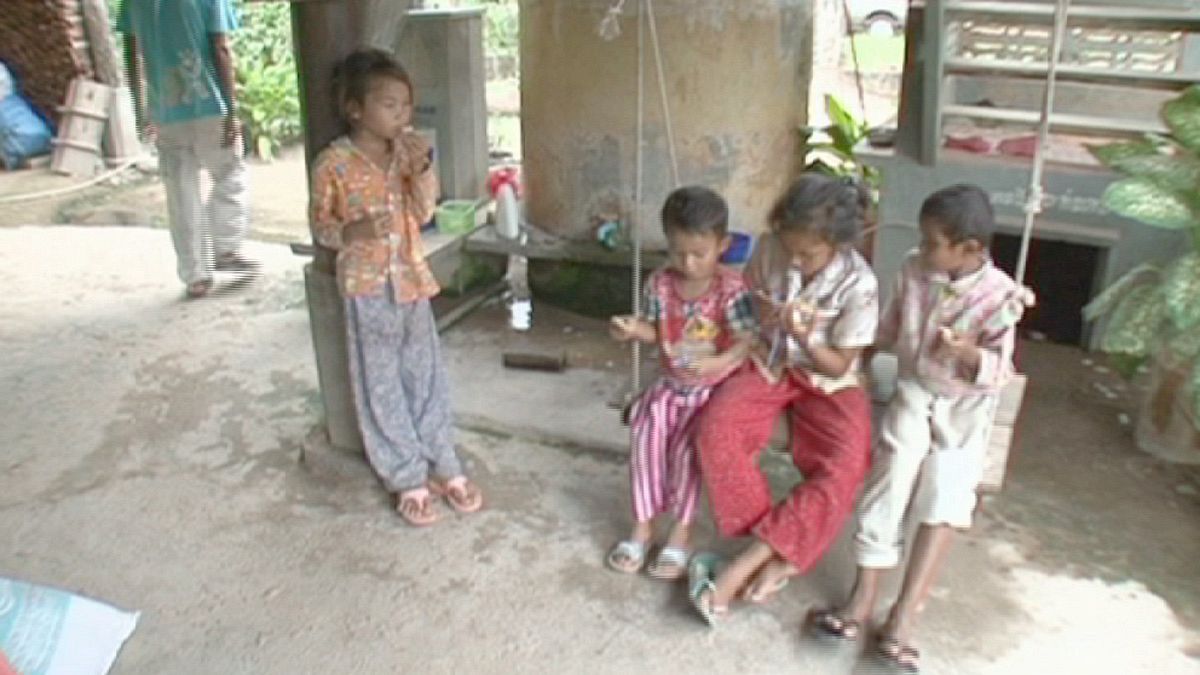This week we look at some of the initiatives aiming to build a hygienic educational environment and teach students about their health. We went to Cambodia, Uganda and the US to witness some of the projects for ourselves.
It is hard to imagine that in today’s world, lavatories are still a luxury for some rural people. Having to relieve themselves in the fields not only affects their health, it also has an impact on their performance at school.
UNICEF estimates that in Cambodia only 16 percent of the rural population has access to proper sanitation. The Melum Primary School only installed its first lavatories last year. Now, the children help keep them clean every morning before class.
Bad sanitation causes diarrhoea. Water-borne diseases kill almost two million children in developing countries every year. But bad sanitation also affects their education. It is hard to concentrate when you know you may have to walk a long way to find somewhere to go. And when the environment around the school is unpleasant.
Kol Ket, the principal at Melum Primary School told euronews: “There are two great benefits in having toilets at the school – they come to school every day and they come to school on time. They enjoy cleaning the lavatories. Also the environment around school is much cleaner. It used to be dirty and smelly.”
The latrines at the Melum Primary School were made locally in the village using the SaniShop business model designed by the World Toilet Organisation.
Apart from educating people about the importance of good sanitation the WTO trains people to construct and install sanitary facilities. The WTO provides the materials free of charge and they organise regular training sessions in the community.
For more information see www.worldtoilet.org
Girls not having access to sanitary pads during menstruation can lead to absenteeism. Many young women in countries like Uganda find themselves in this position. To help avoid this problem, a new project is teaching pupils how to make cheap sanitary pads to avoid taking time off school.
As a result, attendance in Northern Uganda has increased from 30 percent to 70 percent. It is also important as part of efforts to promote the belief that it is worth educating girls and woman.
For more information see
Not all germs are harmful. Some are useful to your health. We followed some children in the US learning about the importance and benefits of some bacteria.
At the biggest ‘Science Playground’ in North America, the New York Hall of Science, children learn science, physics and biology by playing.
Teacher Ema Araya said: “The idea is to zoom into a world that they can’t see with the naked eye. It’s important for them to know that not all microbes are created equal. They are different. Some of these microbes are good, others are bad. Now, the bad ones can do a lot of damage, but the good ones keep us and the earth going.”
The idea that not all bacteria are bad is not an easy sell in hygiene-obsessed America. Microbiology Professor Richard Novick explained: “People need to be educated that bacteria are a very important part of our physiology. It is well known that there are many more bacteria in our body, than our own cells. Attempting to get rid of them is very absurd and very destructive.”
